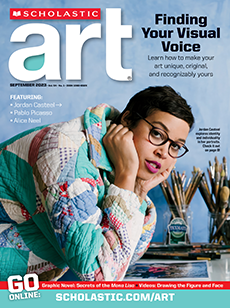The American artist Thomas Eakins is considered by modern critics to be a master of 19th-century realism. However, fame for the Philadelphia artist came late. In his own day, when most popular art was entertaining and often sentimental, the public rejected his truthful portrayals of the people and scenes around him.
Almost all of Eakins' life was spent in Philadelphia, where he was born on July 25, 1844. He studied drawing at the Pennsylvania Academy of Fine Arts and anatomy at Jefferson Medical College. In 1870, after four years of study in Europe, Eakins returned to Philadelphia. He became a teacher at the Pennsylvania Academy in 1876 and was made its director in 1882.
Eakins painted scenes of everyday life in and around Philadelphia. Yet hidden in these "ordinary" scenes are the techniques of a masterful painter. A good example is an early work, Max Schmitt in a Single Scull (1871). Eakins' expert rendering of the reflections in the water gives his objects solidity and helps establish a tranquil mood. In the foreground, the rowing champion Max Schmitt approaches the viewer. To suggest the enormous strength of Schmitt's body, Eakins repeats the arch of the railroad bridge in the bend of Schmitt's back and shoulder. The second rower (Eakins himself) leads the eye back into the painting. From there, nine more boats can be found. Each has its own function in the tightly balanced design of the painting.
The painting's history is typical of Eakins' life. Unpopular when it was painted, it lay in Schmitt's attic for 60 years. When it was rediscovered in the 1930's, it was immediately recognized as a masterpiece.
Later in his career, Eakins painted many revealing portraits. He liked to show his subjects at their work, relating their occupations to their character. One of his most powerful works, The Gross Clinic (1875), shows the famous surgeon Samuel D. Gross performing an operation. Its uncompromising realism shocked the public.
Eakins' interest in realistically portraying the human body led him to pioneering work in photography, which he used to capture the body in action. But Eakins' passion for scientific accuracy was not widely understood. His insistence that female as well as male students at the academy draw the male nude from life caused a scandal and led to his resignation in 1886.
Eakins continued to paint, mainly portraits, for the rest of his life. He won some honors and awards in his later years but never achieved worldly success. He died in Philadelphia on June 25, 1916.
